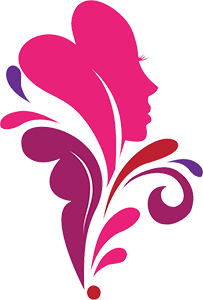Rachel Weisz, an acclaimed actress known for her roles in films such as *The Mummy* and *The Favourite*, graced Paris Fashion Week recently, showcasing not just her impeccable style but also a remarkable youthful glow. Her presence serves as a reminder that maintaining vitality and beauty, especially in the demanding world of entertainment, requires more than just high-end makeup and fashionable clothing. It involves a conscious commitment to a balanced lifestyle, grounded in fitness and self-care practices that resonate with her personal philosophy.
What sets Rachel apart in the realm of celebrity fitness is her thoughtful approach to exercise. Unlike her husband Daniel Craig, who underwent a rigorous regimen to prepare for his iconic role as James Bond, Weisz has opted for a more gentle yet effective routine. She describes her fitness journey in candid terms, expressing her belief that lifting weights could lead to an undesirable bulky appearance, a misconception that many women share. “If I lifted weights I’d get huge,” she remarked in an interview, revealing her preference for “general and moderate” exercise, which primarily includes running and Pilates.
Her choice of Pilates, in particular, stands out as both a pragmatic and empowering decision. This low-impact form of exercise not only supports physical well-being but also provides a means for personal recovery and reconnection after childbirth. New mothers often grapple with societal expectations to regain their earlier figures quickly, yet Rachel’s engagement in Pilates speaks volumes about embracing one’s body at different stages of life. It highlights a shift in narrative from immediate physical recovery to one that prioritizes holistic well-being.
Weisz’s dedication to Pilates post-birth resonates strongly with the insights shared by fitness expert Nancy Best, founder of Ladies Who Crunch. Best points to the multifaceted advantages of Pilates for women, especially those navigating the postpartum journey. Contrary to the push many women feel to jump back into high-intensity workouts, Pilates offers a strategic approach that emphasizes controlled movements, thus preventing injury and enabling proper healing.
“The significance of reconnecting with the pelvic floor and deep core cannot be overstated,” Best notes. Pilates serves as a gentle introduction to strength training, reinforcing foundational muscle groups without the overwhelming pressure of traditional cardio exercises. This method fosters body awareness and confidence, which is especially crucial during a transformative time in a woman’s life.
Furthermore, Best dispels the myth surrounding women’s strength training. Many women fear the prospect of becoming too muscular, equating lifting weights with an intimidating physique typical of bodybuilders. Yet, as she explains, achieving such a body aesthetic is primarily tied to a specific training regimen combined with dietary changes—a combination that does not occur overnight nor without intention.
The conversation surrounding women and weightlifting is one fraught with misconceptions. Best emphasizes that women produce significantly lower testosterone levels than men, impacting their muscle growth potential. This biological fact highlights why the fear of becoming “huge” from lifting weights is largely unfounded. For women, resistance training is not merely a path to aesthetic goals; it’s an essential component of long-term health, particularly as they age.
As bone density naturally declines with age, the implementation of strength training becomes increasingly vital. Weightlifting can help combat osteoporosis risks, ensuring that women can maintain their bone health and overall physical function over time. By performing regular strength-building activities, women can fortify their bodies against potential fragility later in life.
So, what does Weisz mean when she mentions being “naturally muscly”? Best interprets it as a reflection of the visible muscle texture on Rachel’s body, which can be attributed to body fat percentage and muscle mass. Lower body fat percentages contribute to a more pronounced muscular appearance, but maintaining this look is nuanced, involving factors such as nutrition, sleep, and the overall exercise approach.
Weisz’s fitness regime, which blends strength and conditioning, Pilates, and possibly other mindful practices, signifies a broader shift toward a holistic approach to fitness. By choosing a balanced and sustainable workout style, she exemplifies how women can empower themselves through fitness without adhering to rigid societal standards of beauty.
Rachel Weisz’s fitness journey embodies not merely personal preference but a larger message about the importance of a caring and informed approach to health and well-being. As women navigate their own paths in a world filled with competing ideals, Weisz stands as a beacon of balance, teaching us that true beauty radiates from within, cultivated through intentional living and self-acceptance.

